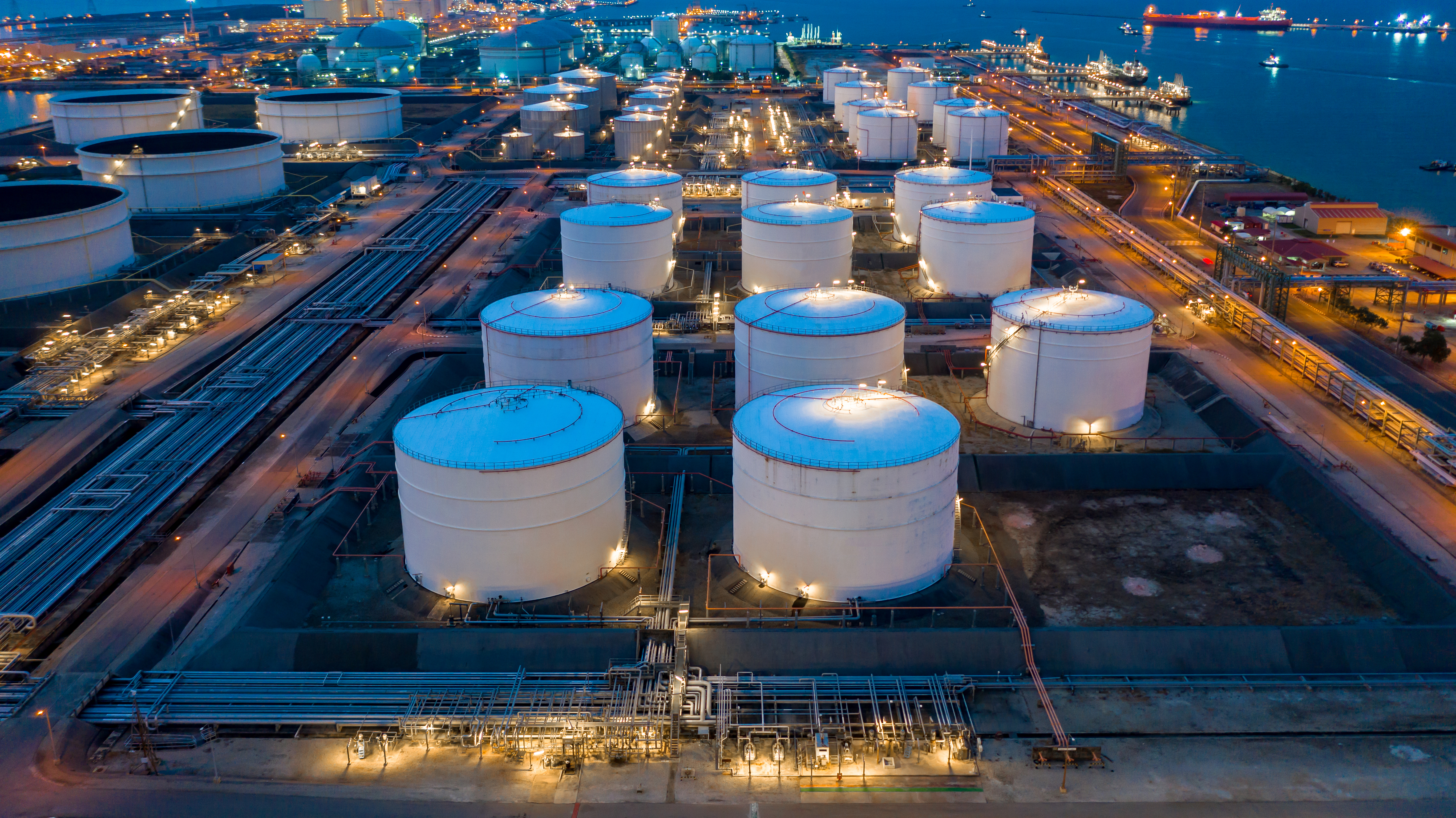Belzona Provides Thermal Insulation Solution for Fortune 500 Oil and Gas Company
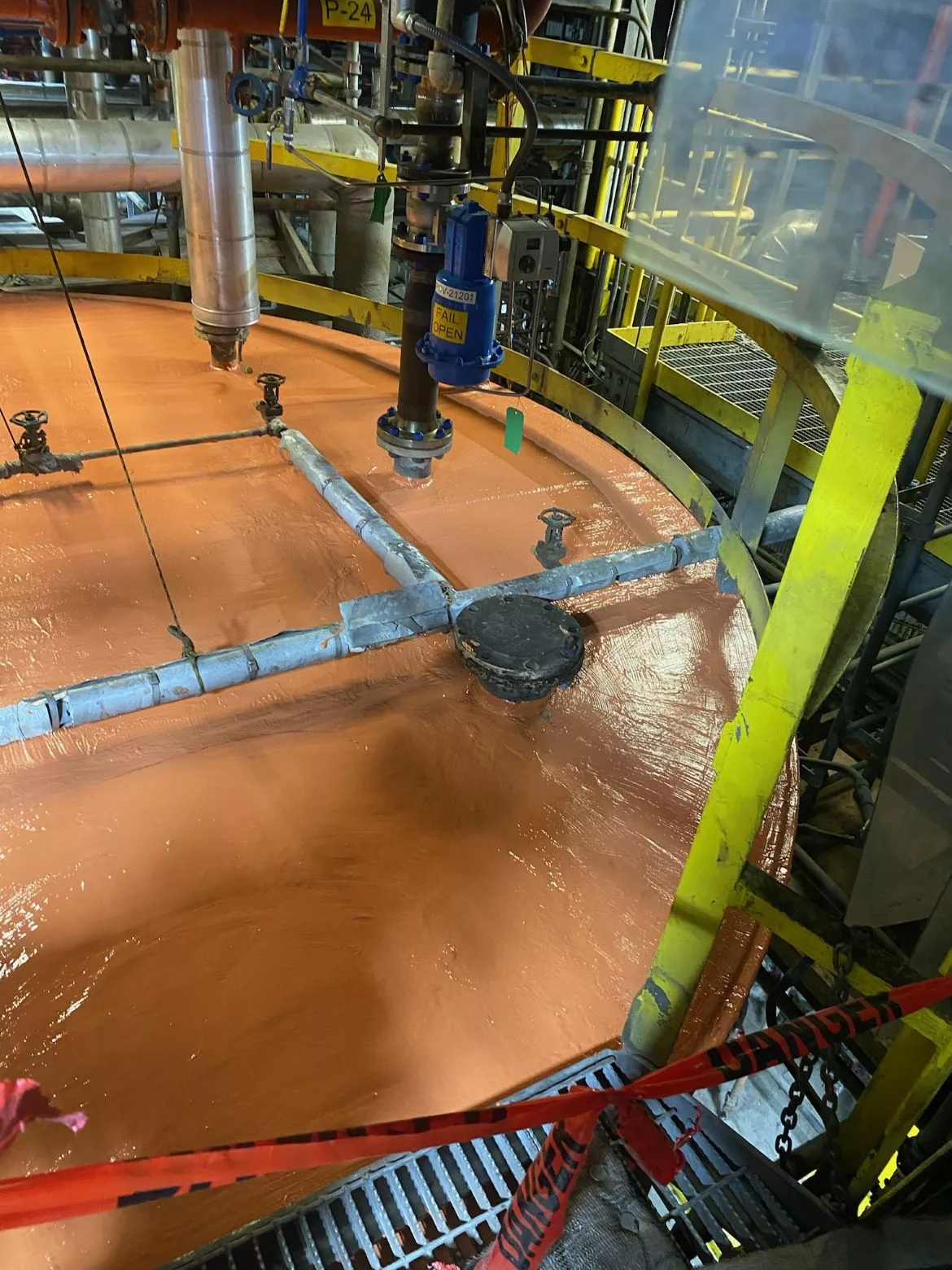
A leading oil and gas company needed thermal insulation for a tank at one of its lubricant plants. The upper surface of the tank, which reaches a temperature of 110 °C (230 °F), serves as a walkway for operators. This creates a high risk for employees receiving contact burns from the hot substrate. Additionally, some pitting corrosion had occurred. Finding a solution that would lower the surface temperature to prevent burns and halt further corrosion was crucial.
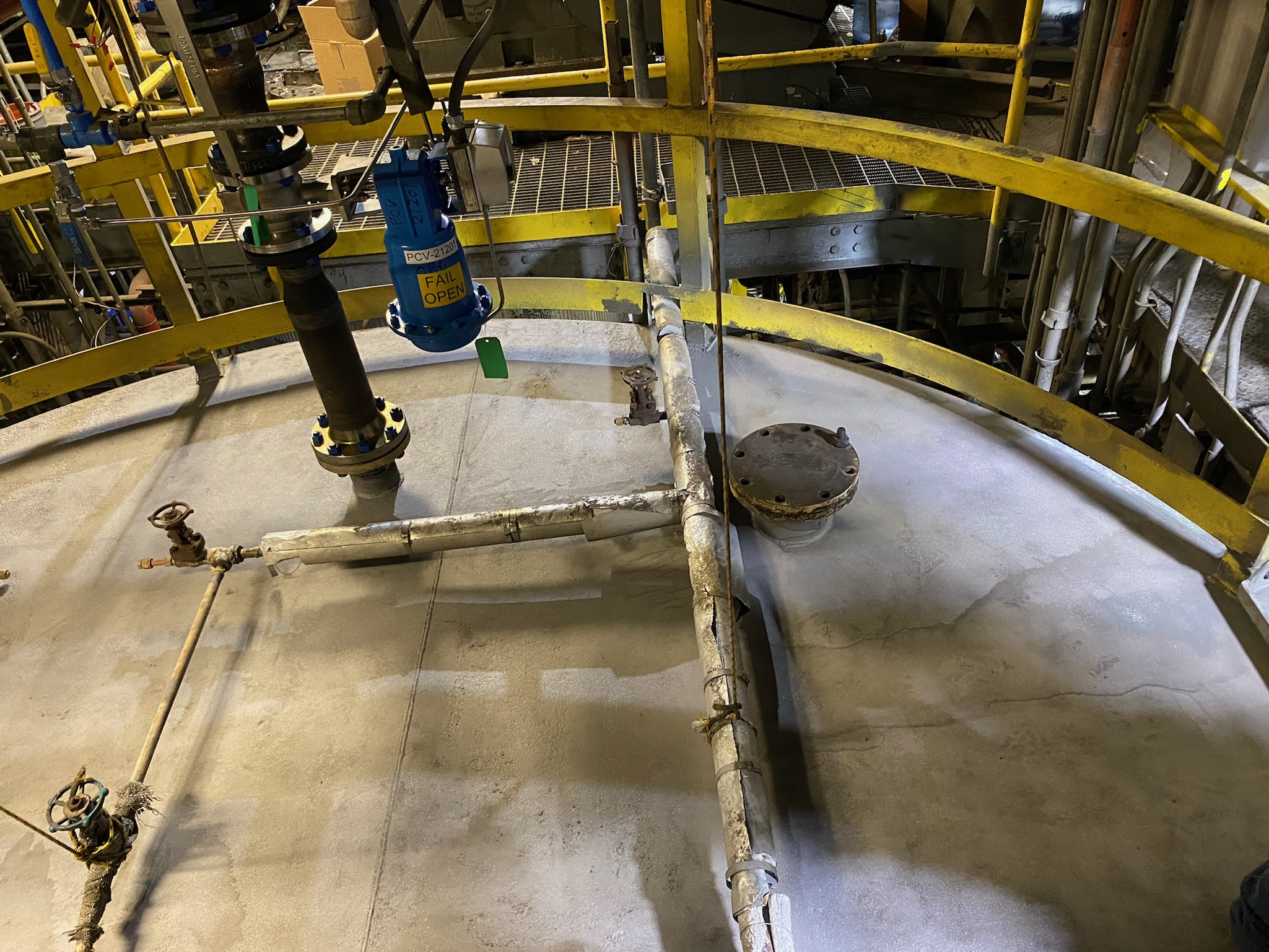 Unprotected tank’s upper surface, operating at high temperatures.
Unprotected tank’s upper surface, operating at high temperatures. What Was the Issue?
The high temperature of the tank causes a hazard for the employees walking upon it. According to the guidance set forth by the Occupational Safety and Health Administration (OSHA), the maximum temperature for exposed surfaces that an employee could come into contact with is 60 °C (140 °F), in line with ASTM C1055. Workers must be protected from exposed heated surfaces, so it was crucial to lower the surface temperature of this tank to eliminate this hazard.
In addition to its high temperature, the metal tank surface had been experiencing pitting corrosion, necessitating pit filling and a protective coating that would prevent it from corroding further.
Why Was Belzona Chosen?
Having previously used various Belzona products, the customer had confidence in their distributors’ recommendation that Belzona 5871 was the optimal solution.
As well as offering thermal insulation to protect employees from contact-burn injuries, this product only needs two coats, enabling quick turnaround times. It also has excellent corrosion resistance, which was essential as the tank top had been experiencing pitting corrosion.
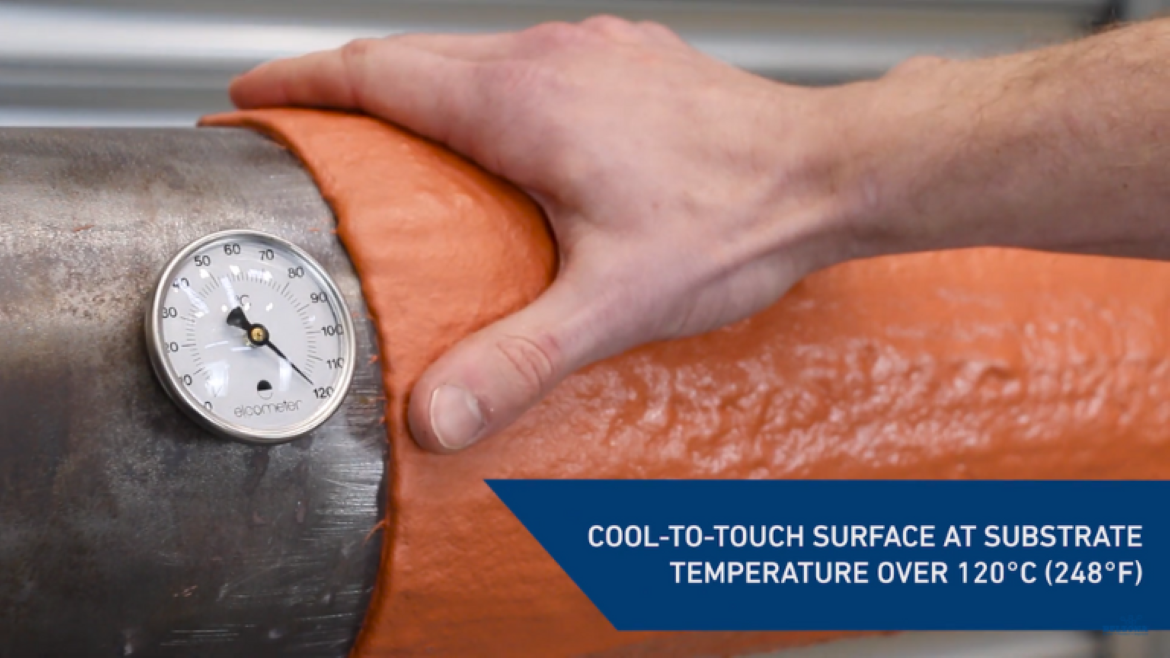
How was the Solution Applied?
The surface was prepared by vapour blasting the substrate to meet SSPC-SP10 (near-white metal) standards and was then degreased. Additionally, some corrosion on the top of the tank required pit filling with Belzona 1121 (Super XL-Metal) ahead of the coating being applied.
With the surface prepared, the first coat of Belzona 5871 was then applied using a short-bristled brush. This product expands, reducing the number of layers which are needed, the first coat was applied at the target thickness of 1000 µm (39 mil) wet film thickness, which results in 3000 µm (118 mil) dry film thickness. The second coat was then applied using the same method six hours later. The tank was back to full service just 12 hours after the final coat was applied.
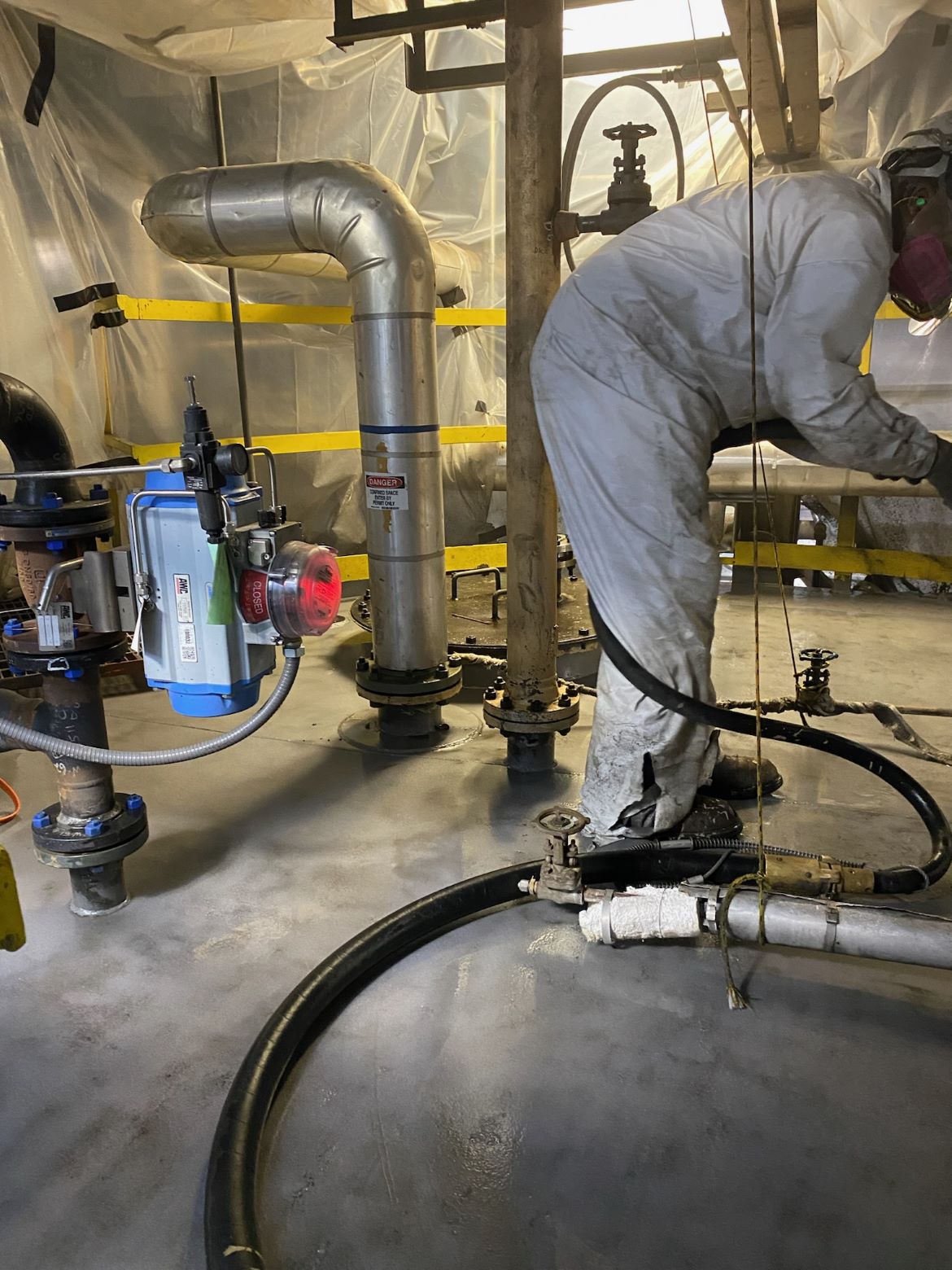 Surface preparation before application.
Surface preparation before application.
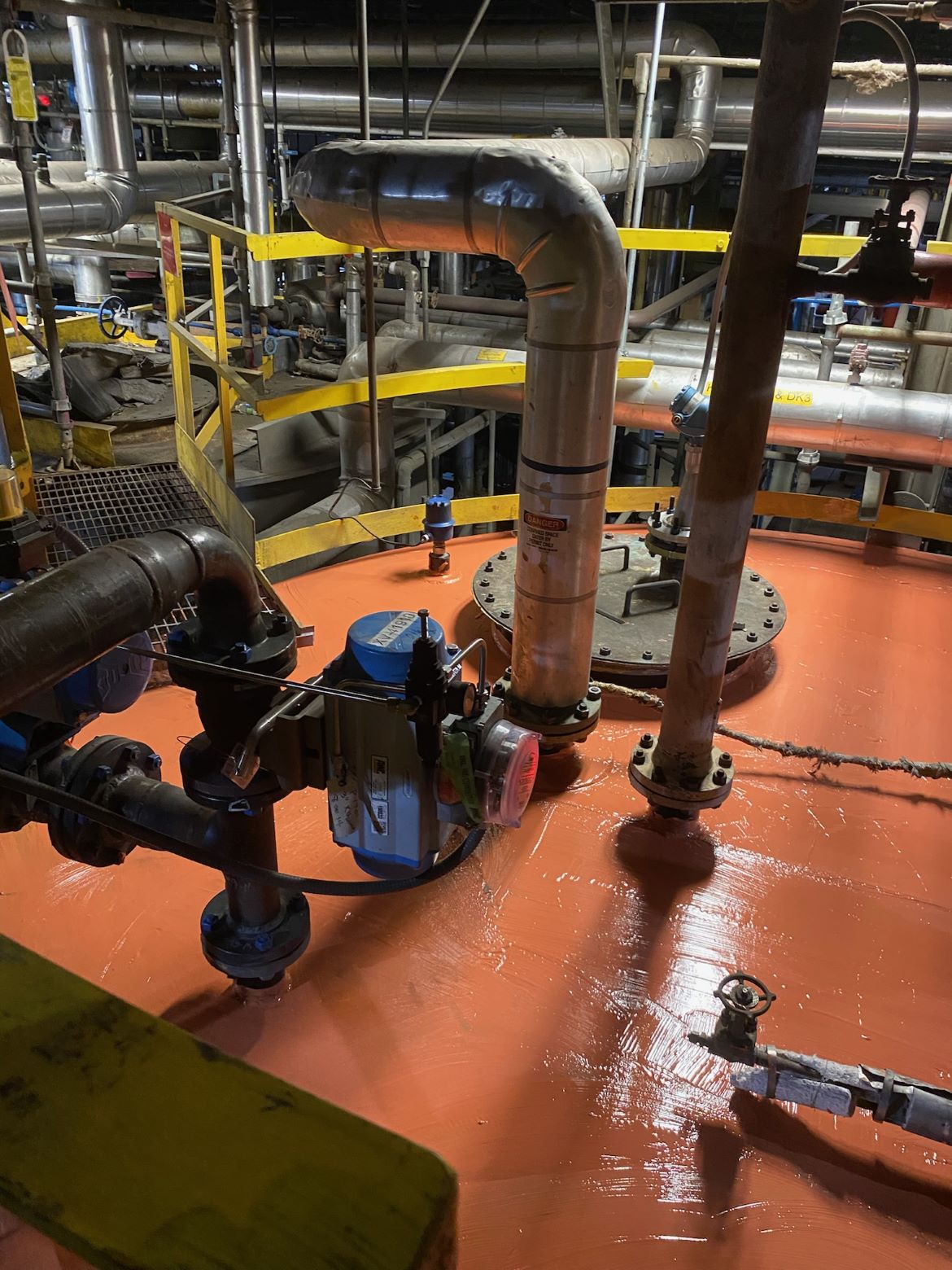
What Was the Result of the Application?
This application successfully offered thermal insulation protection for a Fortune 500 oil and gas company. Following the application of two coats of Belzona 5871, the previously dangerous temperature of 110 °C (230 °F) has been successfully lowered to a safe level, below 60 °C (140 °F). The solution not only mitigated the risk of contact burns but also introduced a valuable layer of protection against corrosion.
*All images courtesy of Belzona.
Looking for a reprint of this article?
From high-res PDFs to custom plaques, order your copy today!




